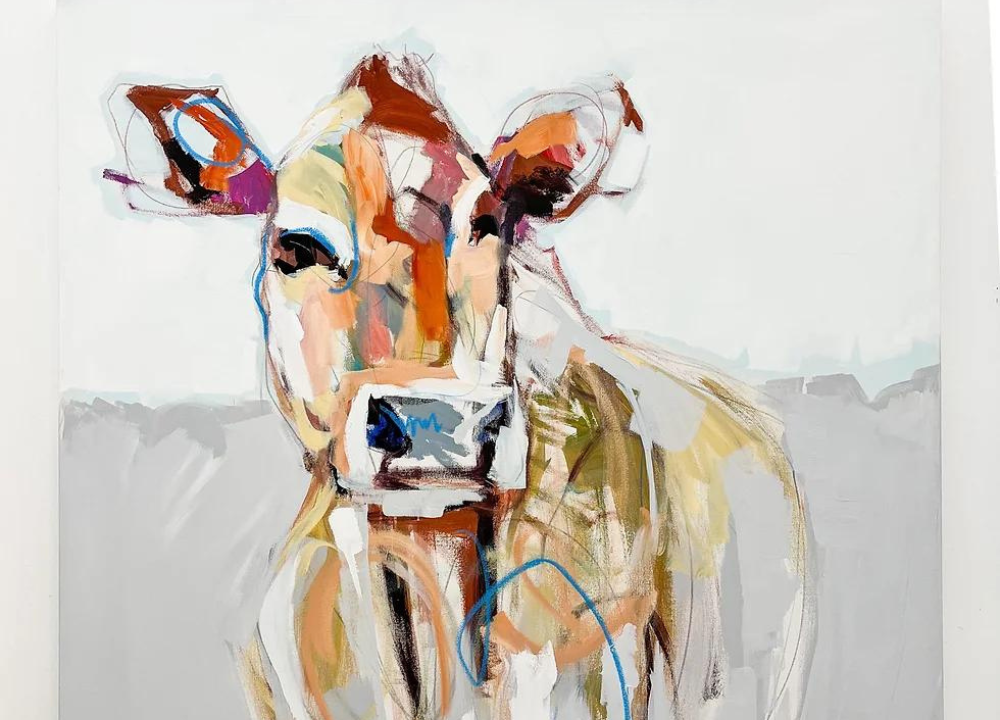Limited edition art pieces can be both rare and valuable. Many collectors seek them to enjoy or invest in.
Understanding how to spot a masterpiece before it sells out can enhance your art collection. Limited edition art is more than just decoration. It tells a story and carries an artist’s vision. Often, these pieces are produced in small numbers, making them highly sought after.
As demand rises, the chance to own a unique piece can quickly vanish. Knowing what to look for can help you make informed decisions. You want to find art that resonates with you while also holding potential value. This guide will help you identify those hidden gems before they disappear from the market. Stay tuned to learn how to spot your next masterpiece.
What Makes Art Limited Edition
Limited edition art holds a special place in the world of creativity. It combines uniqueness with the promise of value. But what makes art limited edition? This question is crucial for anyone interested in collecting art. Understanding this can help you spot a masterpiece before it sells out.
The Concept Of Limited Editions
Limited editions are artworks produced in a restricted number. Artists or publishers decide how many copies to make. Once that number is reached, no more will be created. This concept adds a layer of exclusivity that many collectors desire. Here are some key points:
- Limited editions can include prints, sculptures, or photographs.
- Each piece is usually numbered and signed by the artist.
- Common numbers for limited editions are 50, 100, or 500.
Artists may choose limited editions for various reasons. They can maintain control over their work. Limiting the number can increase demand. It also allows them to create a sense of urgency among buyers. Below is a simple table that shows the difference between various types of editions:
| Type of Edition | Description |
|---|---|
| Open Edition | No limit on the number produced. Available for any buyer. |
| Limited Edition | Specific number of copies. Often numbered and signed. |
| Artist’s Proof | A small number of prints set aside for the artist. Not sold to the public. |
Collectors value limited editions highly. They often appreciate over time. This makes them attractive investments.
Value Factors In Limited Art
Several factors influence the value of limited edition art. Understanding these can help you make smart purchases. Here are the main value factors:
- Artist Reputation: Well-known artists usually command higher prices.
- Edition Size: Smaller editions tend to be more valuable.
- Quality of Work: High-quality art materials and techniques increase value.
- Market Demand: Popular works can sell for much more than their original price.
Condition also plays a role in value. Art that is well-preserved will be worth more. Buyers should always consider the following:
- Check for any damage or repairs.
- Ask for documentation of authenticity.
- Research past sales of similar pieces.
Investing in limited edition art can be rewarding. The right piece can appreciate significantly. Understanding what drives value helps you choose wisely.
Recognizing Quality In Art
Limited Edition Art holds a special place in the hearts of collectors and art lovers. Recognizing quality in art is crucial for spotting a masterpiece before it sells out. Quality art not only enhances your space but also adds value over time. Knowing how to identify quality can make a big difference in your collection.
Art Techniques And Styles
Understanding art techniques and styles helps in recognizing quality. Different artists use unique methods to create their work. Here are some common techniques:
- Oil Painting: Rich colors and textures.
- Acrylic Painting: Fast-drying and versatile.
- Watercolor: Delicate and translucent.
- Printmaking: Reproductions with specific techniques.
Different styles also affect the value and quality of the artwork. Consider these popular styles:
- Abstract: Focuses on colors and shapes.
- Impressionism: Captures light and movement.
- Realism: Depicts life accurately.
- Surrealism: Combines dream-like elements.
Look closely at brush strokes, color choices, and layering. Quality art often shows skill in these areas. A well-executed piece will have depth and character. Seek out artworks that tell a story or evoke emotion. These elements indicate a higher level of craftsmanship.
Artist Reputation And Background
The reputation of an artist plays a significant role in the quality of their work. Established artists usually have a solid background. Here are key points to consider:
- Art Education: Formal training can enhance skills.
- Exhibitions: Participation in notable shows builds credibility.
- Awards: Recognition from peers adds value.
- Art Market Presence: A strong presence can indicate demand.
Researching an artist’s background is essential. Consider the following:
| Factor | Importance |
|---|---|
| Education | Indicates skill level. |
| Exhibitions | Demonstrates recognition. |
| Collectibility | Higher demand equals better value. |
Check online platforms and galleries for artist profiles. Positive reviews and testimonials can offer insight into their reputation. Quality art often comes from artists who have established themselves in the industry.
Market Trends In Limited Editions
Limited edition art pieces capture interest and excitement in the art market. Knowing market trends helps collectors spot potential masterpieces before they sell out. Limited editions are unique and valuable. Understanding what is popular now and what trends are emerging can guide collectors. This knowledge can lead to smart buying decisions.
Current Popular Artists
In the world of limited edition art, certain artists stand out. Their works sell quickly and attract attention. Here are some current popular artists:
- Yayoi Kusama: Known for her polka dots and infinity rooms.
- Banksy: The anonymous street artist creates provocative pieces.
- Damien Hirst: Famous for his unique takes on traditional art.
- Takashi Murakami: Blends traditional Japanese art with pop culture.
These artists have a strong following. Their limited editions often sell out fast. Here is a quick overview of their recent works:
| Artist | Notable Work | Price Range |
|---|---|---|
| Yayoi Kusama | Infinity Mirror Room | $50,000 – $300,000 |
| Banksy | Girl with Balloon | $30,000 – $200,000 |
| Damien Hirst | The Physical Impossibility of Death | $100,000 – $1,000,000 |
| Takashi Murakami | Flower Ball | $10,000 – $150,000 |
Collectors should keep an eye on these artists. Their works can become valuable over time.
Emerging Trends To Watch
Art trends evolve. Certain themes and styles gain popularity. Here are some emerging trends to watch in limited edition art:
- Digital Art: NFTs (Non-Fungible Tokens) are changing the landscape.
- Street Art: Artists like Banksy and Shepard Fairey are leading this trend.
- Eco-Art: Artists focus on environmental themes and sustainability.
- Interactive Art: Pieces that engage viewers are gaining traction.
Investors should pay attention to these trends. They may shape the future of limited editions. Here are some key points:
| Trend | Impact |
|---|---|
| Digital Art | More artists are creating limited digital pieces. |
| Street Art | Brings urban culture into mainstream art collections. |
| Eco-Art | Raises awareness about environmental issues. |
| Interactive Art | Encourages viewer participation and engagement. |
Understanding these trends can help collectors find valuable pieces. Staying informed will lead to better choices.
Researching Artists
Researching artists is essential for spotting limited edition art that may become highly valued. Understanding an artist’s background, style, and previous works can guide your purchasing decisions. This knowledge can help you recognize a potential masterpiece before it sells out. Invest time in researching artists, and you may discover hidden gems in the art world.
Finding Artist Portfolios
Artist portfolios provide valuable insights into an artist’s work. Many artists showcase their pieces online. Here are some effective ways to find artist portfolios:
- Visit personal websites: Most artists create a website to display their work.
- Check art galleries: Many galleries feature artists and their portfolios.
- Explore online art platforms: Websites like Artsy and Saatchi Art display portfolios from various artists.
When reviewing a portfolio, pay attention to:
- Style: Is it unique and recognizable?
- Medium: What materials does the artist use?
- Consistency: Do the works maintain a consistent theme or technique?
Consider creating a table to compare multiple artists:
| Artist Name | Style | Medium | Notable Works |
|---|---|---|---|
| Jane Doe | Abstract | Oil on Canvas | Color Explosion Series |
| John Smith | Realism | Watercolor | Cityscapes Collection |
Gathering this information helps you make informed decisions. Knowing an artist’s previous work can signal future success.
Social Media Influence
Social media plays a significant role in today’s art world. Many artists use platforms like Instagram and Facebook to connect with fans. Follow these tips to leverage social media in your research:
- Follow artists: Many share their latest works and projects.
- Join art groups: Engage in discussions with fellow art enthusiasts.
- Monitor trends: Observe what styles and themes are gaining attention.
Social media allows you to see:
- Real-time updates on new releases.
- Feedback from other collectors and fans.
- Live demonstrations or studio tours.
Engaging with artists online can provide deeper insights:
- Ask questions about their inspiration.
- Learn about upcoming projects.
- Understand their creative process.
Use social media wisely. It can lead you to discover emerging artists. Early recognition can help you spot limited edition art before it sells out.
Examining Art Materials
Limited edition art captures unique moments in creativity. Each piece tells a story and holds value. Examining art materials is crucial for spotting these masterpieces before they sell out. The materials used in creating art can affect its quality, longevity, and value. Understanding different types of printmaking and how to preserve art can help you make informed choices.
Types Of Printmaking
Printmaking is an art form that involves creating images by transferring ink from a matrix onto another surface. Several methods exist, each with unique characteristics. Understanding these methods can help you identify quality pieces.
- Relief Printing: The artist carves an image into a surface, leaving raised areas to print.
- Intaglio: The image is etched into a surface. Ink fills the grooves and is pressed onto paper.
- Screen Printing: Ink is pushed through a stencil on a mesh screen. This method is popular for vibrant colors.
- Lithography: The artist draws on a stone or metal plate. The image is then transferred to paper.
- Giclee: A digital print made using high-quality inkjet technology. This method is known for its detail and color accuracy.
Here is a comparison table of printmaking types:
| Type of Printmaking | Technique | Best Use |
|---|---|---|
| Relief Printing | Carving a surface | Bold designs |
| Intaglio | Etching grooves | Fine lines |
| Screen Printing | Pushing ink through a stencil | Bright colors |
| Lithography | Drawing on stone | Smooth images |
| Giclee | High-quality inkjet | Detailed reproductions |
Knowing these types helps in identifying quality artworks. Each method has its charm and should be considered when choosing a piece.
Durability And Preservation
Durability is key to maintaining the value of limited edition art. Quality materials affect how long the piece lasts. Proper preservation techniques can protect your investment.
- Paper Quality: Acid-free paper prevents yellowing and deterioration.
- Inks: Archival inks resist fading over time. They are essential for long-lasting prints.
- Framing: Use UV-protective glass. This shields the artwork from harmful light.
- Storage: Keep artwork in a cool, dry place. Avoid humidity and extreme temperatures.
Here are some tips for preserving your artwork:
- Store prints flat in a protective sleeve.
- Avoid direct sunlight exposure.
- Regularly check for pests and humidity.
- Handle with clean hands to avoid oils and dirt.
Investing in durable materials and proper preservation ensures your limited edition art remains valuable. This understanding leads to better choices and future enjoyment.
Understanding Editions And Numbers
Limited edition art offers a unique opportunity for collectors. Understanding editions and numbers is key. This knowledge helps you spot a masterpiece before it sells out. Knowing the significance of edition size and how to read edition numbers enhances your ability to make informed decisions. This section will guide you through these important concepts.
Significance Of Edition Size
The size of an edition impacts its value and desirability. Limited edition art means fewer copies are available. This scarcity often increases demand. Here are some factors to consider:
- Small Editions: Editions with 10 or fewer pieces are rare. They tend to hold higher value over time.
- Medium Editions: Editions between 11 to 50 pieces are more common. They can still be valuable but may not appreciate as much.
- Large Editions: Editions over 50 pieces are widely available. These may have less investment potential.
Check the following table for a quick overview of edition sizes:
| Edition Size | Rarity Level | Investment Potential |
|---|---|---|
| 1-10 | Very Rare | High |
| 11-50 | Rare | Moderate |
| 51+ | Common | Low |
Investing in art requires careful consideration of edition sizes. Smaller editions often appreciate in value faster.
Reading Edition Numbers
Edition numbers help you identify the uniqueness of a piece. Most artists number their prints. A typical format looks like this: 5/50. This means the piece is number 5 out of an edition of 50.
Understanding these numbers is crucial:
- The First Number: Indicates the print’s number within the edition.
- The Second Number: Shows the total number of prints made.
For example, 1/25 means it is the first print out of a total of 25. The lower the first number, the more valuable the print can be. Here are some points to keep in mind:
- Artists may also include a letter with the number. This often indicates a special edition.
- Some prints may be signed. A signature can increase value.
- Always verify the edition with the artist or gallery.
Knowing how to read edition numbers empowers you. It allows you to gauge the rarity and potential value of a piece. This skill is essential for any serious art collector.




